search the site
Red Sea Crisis: A Timeline of Maritime Chaos Over the Past Year

he past year has witnessed an unprecedented escalation of maritime violence in the Red Sea and surrounding waterways, with the Iranian-backed Houthi insurgents at the center of a mounting crisis. The hijacking of the Galaxy Leader on November 19, 2023, marked the beginning of a relentless campaign targeting international shipping. Over 100 incidents have been recorded since, with devastating consequences for global trade, environmental safety, and human lives.
The Timeline of Escalation
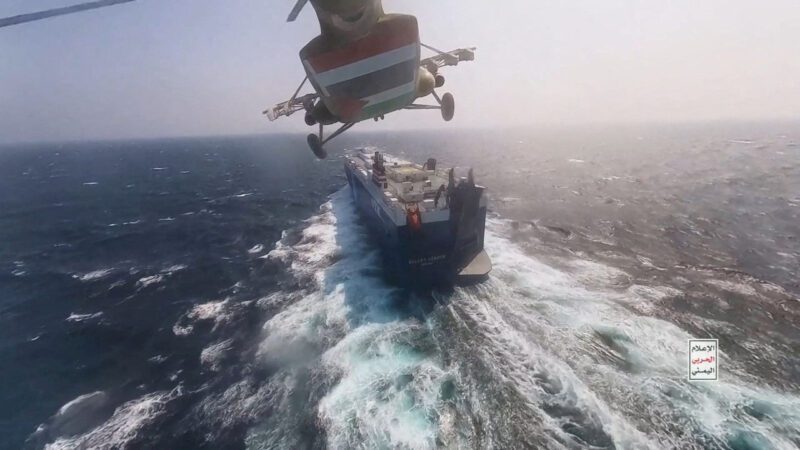
November 19, 2023: The Galaxy Leader, a car carrier en route to India with 25 crew members, was seized by Iranian-backed Houthi rebels near Hodeidah, Yemen. This high-profile hijacking marked the onset of an aggressive maritime campaign by the Houthis, who had previously threatened Israeli ships following Israel’s intensified assault on Gaza after Hamas’s October 7, 2023, attack on Israel.
November 25-27, 2023: The chemical tanker M/V Central Park, managed by Israel’s Zodiac Maritime Ltd., was boarded by armed individuals in the Gulf of Aden. The USS Mason intercepted and apprehended five suspects believed to be Somali pirates. Shortly after, two ballistic missiles, launched from Houthi-controlled areas, targeted the vicinity of the Mason and Central Park. Both missiles missed, landing in the Gulf of Aden.
December 14, 2023: A missile narrowly missed the Maersk Gibraltar near the Bab-el-Mandeb Strait, prompting Maersk to temporarily suspend Red Sea operations. This pause triggered several other shipping lines to follow suit, signaling that a major disruption in global shipping was imminent.
December 18, 2023: U.S. Secretary of Defense Lloyd Austin launched Operation Prosperity Guardian, a multinational security initiative, under the umbrella of the Combined Maritime Forces and the leadership of its Task Force 153, focusing on security and freedom of navigation in southern Red Sea and the Gulf of Aden.
The Pentagon described Operation Prosperity Guardian as a type of “highway patrol” that will “respond to and assist as necessary” commercial ships in the region. “It’s a defensive coalition meant to reassure global shipping and mariners that the international community is there to help with safe passage,” said Air Force Maj. Gen. Pat Ryder.
December 30, 2023: Following the establishment of Operation Prosperity Guardian, Maersk decided to resume transits through the region. However, within days, the M/V Maersk Hangzhou was attacked by missiles and nearly boarded in the Red Sea. In response, Maersk indefinitely suspended its Red Sea transits, diverting vessels around the Cape of Good Hope for the “foreseeable future.”
Following Maersk’s example, other shipping companies also suspended their voyages through the region.
January 3, 2024: A coalition of nations, including the U.S. and the UK, issued a joint statement condemning Houthi attacks on shipping, warning of severe consequences. The warnings, however, were ignored.
January 9, 2024: The Houthis launched a massive barrage of missiles and one-way attack drones toward international shipping lanes containing both merchant and U.S. Navy vessels.
U.S. warships, fighter jets, and a UK warship intercepted and destroyed eighteen suicide drones and three missiles, preventing any damage to ships. The attack marked the largest Houthi assault thus far in the conflict.
January 11, 2024: U.S. and UK forces conducted their first airstrikes on Houthi weapon sites in Yemen, targeting radar systems, missile storage, and launch facilities.
January 24, 2024: Two U.S.-flagged Maersk Line, Limited vessels, carrying U.S. government cargo, were targeted near the Bab-el-Mandeb Strait despite Navy “accompaniment.” The incident again marked a turning point as Maersk halted its U.S.-flag operations in the region.
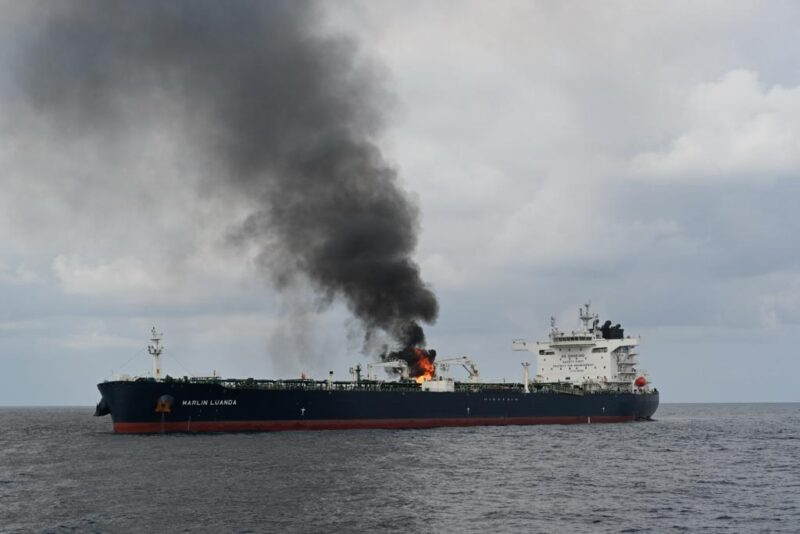
January 26, 2024: The tanker Marlin Luanda was hit by a Houthi missile in the Gulf of Aden, igniting one of its cargo tanks. The fire was extinguished, and no injuries were reported, though the incident highlighted increasing risks from Houthi attacks.
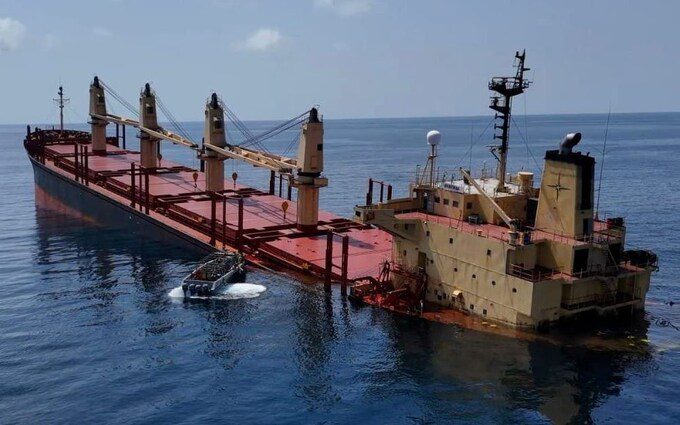
February 18, 2024: The M/V Rubymar, a Belize-flagged, UK-owned bulk carrier, was struck by an anti-ship ballistic missile, leading to its sinking on March 2, 2024, two weeks after the attack.
The incident marked the first time the Iranian-backed Houthi group had successfully sunk a ship since launching their attacks on shipping in solidarity with Palestinians in Gaza the previous November. The vessel’s cargo of 21,000 metric tons of ammonium phosphate sulfate fertilizer posed an environmental threat to the Red Sea.
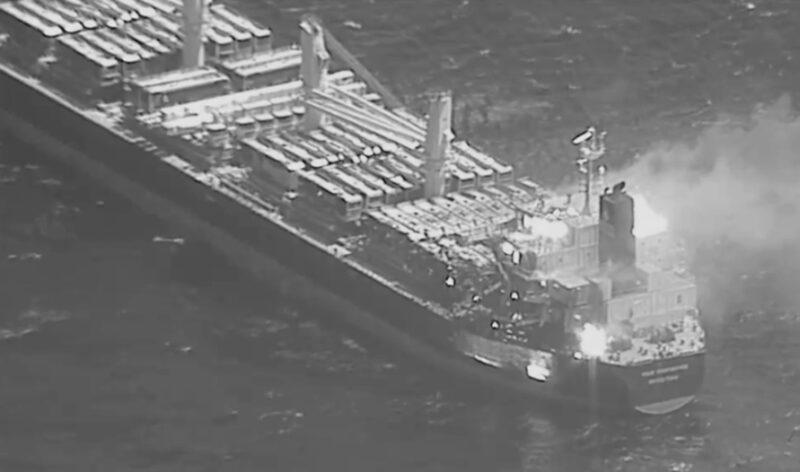
March 6, 2024: The M/V True Confidence, a Barbados-flagged bulk carrier, was hit by a missile near Aden, killing three seafarers. It marked the first civilian fatalities of the crisis.
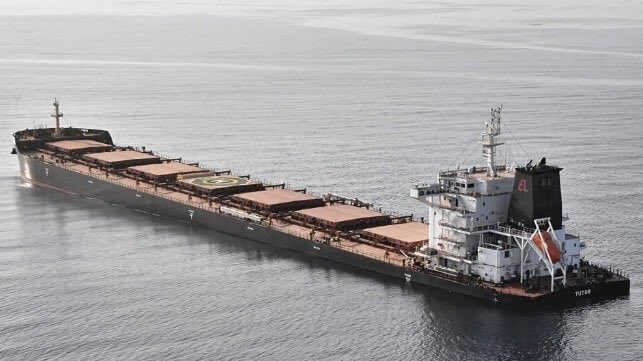
June 12, 2024: The M/V Tutor was attacked in the Southern Red Sea. The Liberian-flagged, Greek-owned bulk carrier was first struck in the stern by an unmanned small craft while underway. A second strike followed from an unknown airborne projectile.
The vessel sank about a week later. The incident claimed the life of one seafarer who went missing aboard the Tutor, marking the fourth fatality from the attacks.
This attack was notable as the first successful use of an unmanned surface vessel by the Houthis.
June 13, 2024: The day after the initial attack on the Tutor, the Houthis struck the M/V Verbena with two missiles, causing fires and significant damage. One civilian mariner suffered severe injuries and was evacuated by aircraft from USS Philippine Sea for medical treatment.
The Verbena’s crew issued a distress call indicating they were abandoning ship. Despite being just eight nautical miles away, the Iranian frigate IRIN Jamaran failed to respond to the distress call, according to U.S. Central Command.
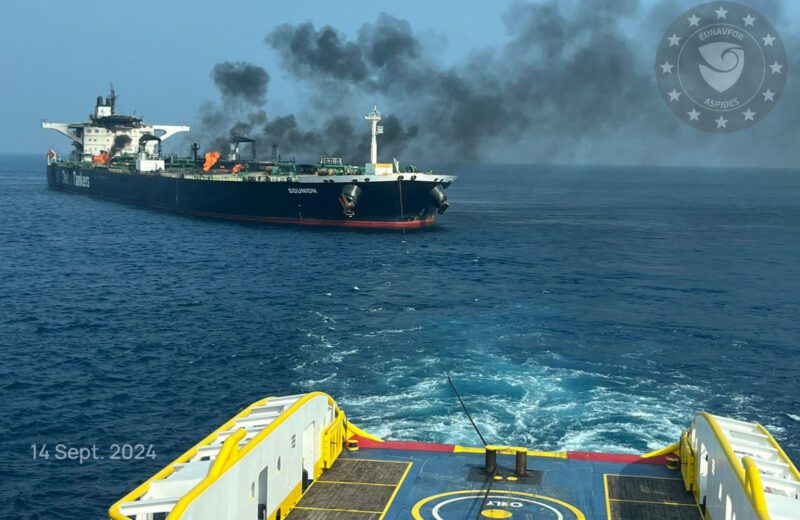
August 21, 2024: The M/T Sounion, a Greek-flagged tanker carrying approximately 1 million barrels of crude oil, was attacked multiple times in the Southern Red Sea, sustaining damage. Houthi militants then rigged the vessel with explosives and detonated them, igniting multiple fires that burned for about a week. The incident raised fears of an environmental disaster that could dwarf the Exxon Valdez spill, given the Sounion’s larger cargo capacity.
As fires continued to rage, the tanker was towed to safety approximately 81 kilometers off Eritrea’s coast under the protection of the EU’s Operation Aspides. A team of international experts began firefighting operations on September 23rd, and by early October, they had extinguished all fires, averting the threat of an oil spill.
October 16, 2024: U.S. Central Command (CENTCOM) forces conducted targeted airstrikes against Iran-backed Houthi weapons storage facilities in Yemen. The operation deployed U.S. Air Force B-2 “Spirit” long-range stealth bombers to neutralize the growing threat to international maritime security in the region.
The precision strikes targeted five hardened underground facilities that housed advanced conventional weapons, including missiles and munitions used in the regional attacks.
Human Cost and Industry Fallout
The financial toll on global trade from the Red Sea crisis is staggering, with Suez Canal traffic plunging by an estimated 60% as operators reroute vessels around the Cape of Good Hope. This detour increases shipping costs, extends transit times, and significantly raises greenhouse gas emissions.
However, the human cost is equally devastating. The Galaxy Leader‘s crew remains in captivity, with little to no contact with their families. To date, Houthi attacks have claimed the lives of four seafarers, seriously injured two, and left crews traumatized.
The escalation in the Red Sea is not just a regional crisis but a global one. As shipping lines, governments, and international coalitions grapple with the fallout, the resilience of global trade is being tested like never before. The year since the Galaxy Leader‘s hijacking serves as a stark reminder of the interconnectedness of maritime security, international trade, and geopolitical stability.
source : gcaptain


















